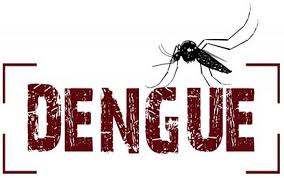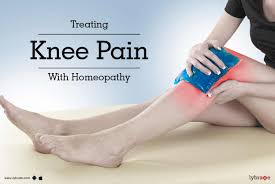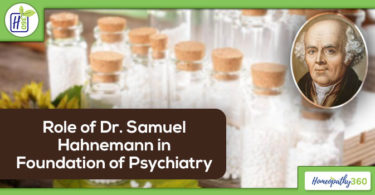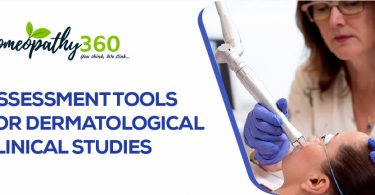“All problems are illusions of the mind”
Author: Dr Shreya N Padiyar, Assistant Professor, Department of Organon of Medicine, Yenepoya Homoeopathic Medical College & Hospital, Naringana Mangaluru
DR SAMUEL HAHNEMANN: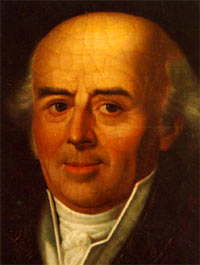
Who is Samuel Hahnemann?
Dr. Samuel Christian Frederic Hahnemann M.D.
(1755-1843)
Samuel Hahnemann
Samuel Hahnemann was the founder of Homoeopathy. He worked for several years & constituted the cardinal principles of the science and art of Homoeopathy.
He the Father of Experimental Pharmacology because he was the first physician to prepare medicines in a very unique & specialized way & started proving them on healthy human beings, to assess how the medicines acts on the human body to cure Suffering individuals. Before Hahnemann, medicines were given on speculative indications, mainly on the basis of authority without any type of experimental verification on Human beings.
Concept:
Samuel Hahnemann has given great importance towards the understanding of mental illness. In fact, he was basically the first physicians to perceive the mentally ill as “sick individuals” who always required special care and proper medical care.
According to our Master, the mind and body are not two different part but they are derived from same body but they form an indivisible whole but absolutely separate by mind. In natural diseases the physical turbulences are usually found associated with their mental disturbances. Illness is the end result of whole body as well as of physiological events that happens in the lifetime of an Individual.
DR JAMES TYLER KENT
Who is James Tyler Kent?
Dr. James Tyler Kent
MD
(1849-1910)
Dr. Kent was born in Woodhull, New York. He was graduated from the Eclectic Medical Institute of Cincinnati, and started practice in St. Louis as an Eclectic graduate. He became interested in homoeopathy in 1878, when his wife’s illness totally failed to respond either to eclectic or allopathic treatment and was cured by a Homoeopath. Kent began his practice with low potencies, but he was not satisfied. Later he shifted towards to test the 30th potency to see if there was any medicine present. He prepared medicines with his own hands especially the 30th potency of Podophyllum according to Centesimal scale after the method of Hahnemann.
Concept:
Dr. J.T. Kent was always the strong follower of Dr Samuel Hahnemann he has also elaborated the Organon of Medicine, further he also said like, “Human body is a government and the mind is the central government of the body he lives. He has clearly given example to this by saying about a nervous child may have wild dreams, nervous excitement, restless sleep, but if we examine all the organs of the body, he or she might be absolutely normal. But if this sickness is allowed just like that then in the span of twenty or thirty years will definitely produce some very aggressive deadly bodily disease.
He always says that there is a Strong relationship between the Mind and Body through the nerve fibre.” Therefore, every homeopath is essentially a psychotherapist.
When it comes to his Lesser writings he has, divided mind into three categories, they are will, intellect and memory and explained them for better understanding.
DR H A ROBERT: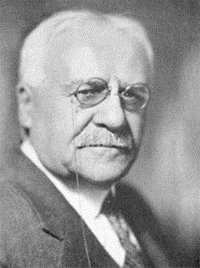
Who is H A Roberts?
Herbert A. Roberts
(1868-1950)
Herbert A. Roberts, MD, was born May 7, 1868 and died October 13, 1950. He graduated from the New York Homoeopathic Medical College and practiced in Vermont and then set up his clinic for practice in Derby Connecticut.
Dr. Roberts worked as a medical officer on troop ships during World War 1. He was also the president of the International Hahnemannian Association (IHA) in 1923 and was an editor of the much-respected Homoeopathic Recorder from 1927-1934.
Concept:
He says that the chief aim of the Homoeopathic physician consists in ascertaining the remedy that most completely and fully covers each individual case. In other words, the totality of the symptoms. On the other hand, if we painted the classic features only there would be no distinguishing characteristics in the finished product. We hear so much of the totality of the symptoms that sometimes it behaves us to stop and think what this means. The Homoeopathic physician may be likened to an artist painting a portrait.
DR STUART CLOSE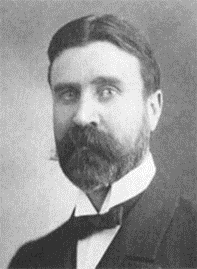
Who is Stuart close?
Stuart M. Close
(1860-1929)
He said “Homoeopathy is both an Art and a Science. The successful homoeopath must be both an artist as well as a scientist.”
All his works were both artistic and scientific he said that Theory and practice must go hand in hand. Methodology of practice must be governed by cardinal principles which is well defined.
Dr. Close was born on November 24, 1860 and came to study homeopathy after the death of his father in 1879. His mother remarried a homoeopathic physician who turned Close’s interests from law to medicine.
Concept:
He says that mind is derived from hereditary characters and they get influenced more or less by environment, which defines & determines the individual’s reactions, towards different situations he faces in the environment.
According to him, prescribing is an art, but art should also be based on facts so that whichever methodology we adapt in our practice should ultimately benefit the suffering mankind. Underlying our art with the purpose of reforming methods, strengthening morale and correcting faulty mental attitudes would be more practical, more accurate and more technique for healing. Every problem with which homoeopathy deals, therefore, must be approached and every technical process conducted systematically from a particular and definite mental standpoint.
CYRUS MAXWELL BOGER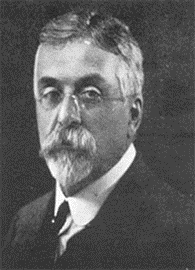
Who is Cyrus Maxwell Boger?
Dr. Cyrus Maxwell Boger
M.D.
(1861-1935)
Dr. C. M. Boger graduated from the Philadelphia College of Medicine.
He was a graduate from Hahnemann Homoeopathic Medical College in Philadelphia. During his time, in medical practice and research, Dr. Boger has published scientific textbooks, in addition to his authorship of a number of articles for medical journals.
His important original works are like The Times of the Remedies and Moon Phases and his Proving’s of Samarskite made him universally recognized as an author and physician of great eminence.
Concept:
To understand a case he says that “The spirit of the clinical symptoms picture is best obtained by asking the patient to tell his own story, whenever that is possible” He has always stressed on the importance of mental state by further saying that, always consider the mental state as it comes next to the cause and also course of the sickness”.
He was very clear about the fact that mind is the cause behind the physical symptoms, hence should be understood and properly utilized. The dependency of the mental symptoms and physical symptoms should never be ignored.
RICHARD HUGES: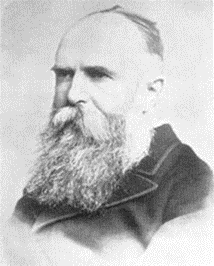
Who is Richard Hughes?
Dr. Richard Hughes
(1836-1902)
Dr. Richard Hughes was born in London, England. He received the title of M.R.C.S. (Eng.), in 1857 and L.R.C.P. (Edin.) in 1860. He then obtained his post-graduation M.D. from the American College a few years later.
Hughes had actively cooperated with Dr. T.F. Allen to compile his ‘Encyclopedia’ and also helped aid to Dr. Dudgeon in translating Hahnemann’s ‘Materia Medica Pura’ into English. In 1889 he was appointed an Editor of the ‘British Homoeopathic Journal’.
Concept:
He said that Homoeopathy is the grave of science”; for science as such has no existence here – it dies and is buried.
Hughes believed that, if you are serious about the similia idea you must take pathology into account. He said that medicines should be chosen not just on subjective symptoms they produced but on the basis of their known pathological effects on human beings & even on animals. He also insisted that, in trying to find the correct remedy you should consider the time sequence in which symptoms occur. According to him mind symptoms is also integral part of totality only if it clearly elicited.
DR J H ALLEN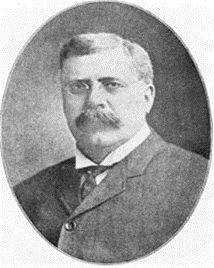
Who is J H Allen?
Dr. John Henry Allen MD
(1854-1925)
1900 Henry Allen was a dear student of H.C. Allen. He was also the president of the IHA in 1900. Dr. Allen was teacher at the Herring Medical College in Chicago.
Concept:
In his book of chronic miasm he has mentioned that “Therefore we have not the total causa, i.e. in any pathological group we must go back to the fountain head in order to find out that which taints the river of life same way in case taking should try to trace the cause of the disease from where and how it has started.
DR RAJAN SANKARAN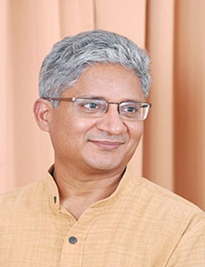
Who is Rajan Sankaran?
Rajan Sankaran
(1960-)
Dr. Rajan Sankaran was born on May 24, 1960, in Mumbai, his father, Dr. P. Sankaran,. Dr. Rajan Sankaran is a graduated Gold Medalist from the Bombay Homeopathic Medical College in 1981. He is the Assistant Professor in the department of Repertory in Smt. C.M.P. Homoeopathic Medical College, Mumbai and is attached to its hospital as the Honorary Physician.
As a feather for the crow of his achievement’s he is also the Editor of the Asian Edition of the Homoeopathic Links and is also the Vice-Chairman of the International Council for Classical Homoeopathy (Asian Region).
Concept:
The chapter in his book The Spirit of Homoeopathy to the Subject of “Treating the Present State” in which he indicates the need to treat the totality of the present state of a person. He says each person has a specific constitution of his own and that has to be defined. By this he means that each person has a specific, individual body, mind and disease.
LUC DE SCHEPPER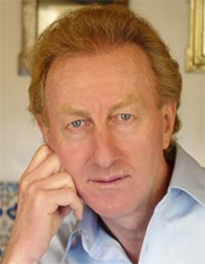
Who is Luc De Schepper?
Luc De Schepper
MD, PhD, D.I. Hom., Lic. Ac
(1946-)
Dr. Luc De Schepper was born May 1, 1946, in Belgium and He is the founder of the Renaissance Institute of Classical Homeopathy in Cambridge, Massachusetts and author of twelve books on homeopathy, acupuncture, and holistic health care.
Concept:
He says that when we understand a patient together with his/her stresses it becomes very useful for us to practice the system and to construct the characteristics symptoms of the patient and derive his constitutional picture. In Homoeopathy we always considered the patient as living entity and treated giving importance to mental and subjective symptoms.
We homoeopaths are now capable of forming concepts that plan for more effective therapeutic program, which has the core idea of psychosomatic relationship nothing but the “MIND-BODY’ relationship concept helps in treating the patient his concept and provides a better scope in the management of such psychosomatic diseases.
REFERENCES
- http://www.wholehealthnow.com/bios/samuel-hahnemann.html, Cited on 07 October 2020
- Haehl, Richard: Hering-Haehl Homöopathischer hausarzt. (Stuttgart, F. Frommann, [1919])
- http://www.wholehealthnow.com/bios/james-tyler-kent.html cited on 07 October 2020
- Kent J.T. Lectures on homoeopathic philosophy. New Delhi: B Jain publication 2009. Pg. 17,20
- Kent JT. New Remedies Clinical Cases Lesser Writings Aphorisms and Precepts. Reprint ed. New Delhi: B. Jain Publishers Pvt. Ltd; 1994.Pg 36,39.
- http://www.wholehealthnow.com/bios/herbert-roberts.html cited on 09 October 2020
- Roberts HA. The principles and Art of Cure by Homœopathy New Delhi: B Jain publication 2007. Pg. 75,86
- http://www.wholehealthnow.com/bios/stuart-close.html cited on 10 October 2020
- Close S. The Genius of Homoeopathy lectures and essays on Homoeopathic philosophy. Reprint ed. Delhi: B Jain Publishers (P) Ltd;1999. Pg 87,121.
- http://www.wholehealthnow.com/bios/cyrus-boger.html cited on 11 October 2020
- Boger M C.A Synoptic Key of The Materia Medica New Delhi: B Jain publication 2008. Pg. 03,07
- http://www.wholehealthnow.com/bios/richard-hughes.html cited on 14 October 2020
- Hughes Richard. The Principles & Practice of Homoeopathy. New Delhi: B Jain publication 2003. Pg. 21
- http://www.wholehealthnow.com/bios/john-henry-allen.html cited on 15 October 2020
- Allen J.H. ‘The Chronic Miasms of Psora and Pseudo-Psora volume 1, B.Jain publisher’s pvt. Ltd New Delhi page-23,41.
- http://www.wholehealthnow.com/bios/rajan-sankaran.html cited on 14 October 2020
- Sankaran R. The substance of Homoeopathy 4th ed. Mumbai; Homoeopathic Medicine Publisher. Pg. 25.
- http://www.wholehealthnow.com/bios/luc-de-schepper.html cited on 15 October 2020
- DeSchepper L. Achieving and maintaining the simillimum. 1st ed. New Delhi: B. Jain Publishers; 2006.


